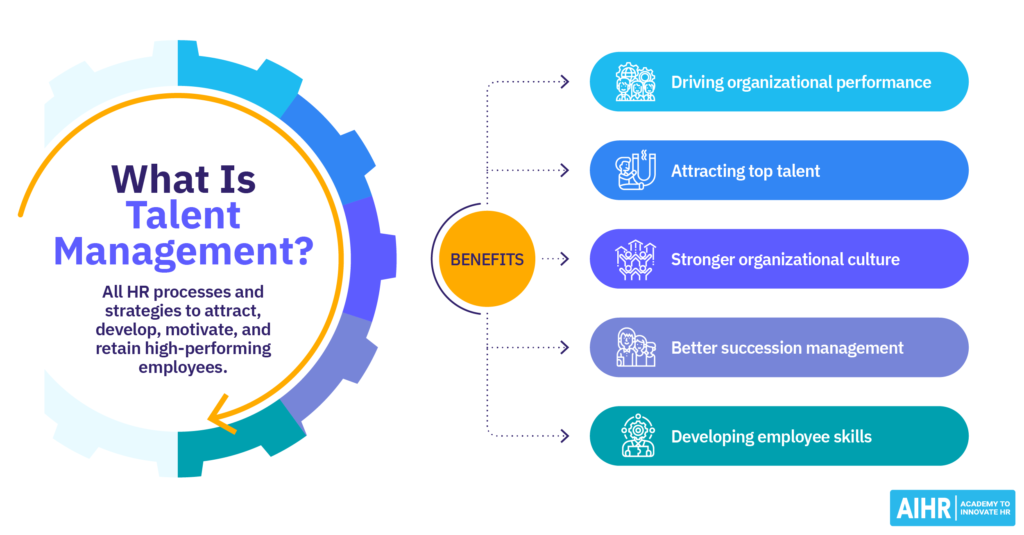The term SaaS means “Software as a Service”. It is a distribution model of software in which the software and any related data are stored in the cloud. The software can be accessed over the internet and is commonly offered with a subscription fee per user.
Some key characteristics of SaaS
- It works on the basis of software license that is either monthly or yearly.
- They run software which they install in a centralized mode, rather than local deployment.
- The software is not accessed locally but through the web or mobile apps.
- The provider controls the update and updates the software centrally on the server.
- They are not saved on local networks.
- It is scalable per usage and subscription.
- Simultaneous access by various users.
- They also provide pay-as-you-go pricing instead of big upfront licence fees.
Thanks to SaaS, businesses do not have to worry about providing hardware and other IT support needed for software use. Some of the leading SaaS applications include Salesforce, Office 365, Slack and Dropbox, among others. The Ssas model enhances scalability and agility of software delivery for modern businesses.
Engaging content helps a company to stay ahead in the busy SaaS market. Due to the many alternative choices, SaaS providers have to create a compelling content that informs prospects and convinces them to select their products to solve the problem.
The crucial thing is creating useful content that engages in a casual tone. Demonstration of expertise and showing that you know what they are suffering from makes it easy for customer to see your Sass is the advisor they must follow.
SaaS content marketing differs from traditional product marketing
- More focus on educating and problem-solving vs. direct product pitches
- Buyer journeys are longer and more complex for SaaS purchases.
- Must establish thought leadership and credibility around technical/complex solutions
- Content types emphasize educational assets like how-tos, research reports, and videos over simple product sheets.
- The high importance of SEO visibility and keyword optimization
- Leveraging communities and peer engagement for feedback and amplification
- Directly accessible trials and freemium offerings enable hands-on product experience to complement the content.
- Metrics and analytics around consumption, recurring engagement, and conversion/retention are more extensive.
- The content supports the customer journey through the entire lifecycle, from awareness through onboarding, adoption, retention, and expansion.
Compelling Content Cuts Through the Clutter.
SaaS providers must be visible in the marketplace by delivering effective content marketing. Companies must ensure that they create compelling content that informs, engages and makes buyers believe that their platform is better than the alternatives. Trustworthy content builds thought leadership and credibility around technical solutions while helping buyers navigate long, complex purchase journeys. There are three things that SaaS content must do. One is that it must cut through the noise to showcase value. Secondly, it deepens ongoing customer relationship beyond the initial sale. Finally, it fosters brand differentiation and loyalty.
Powerful Content, Measurable Performance
- Improves SEO ranking and visibility, thus, drives traffic and leads.
- Leads prospects along every step of the buyer’s journey.
- Teach customers to achieve adoption, retention, and expansion.
- Enhances the brand’s thought leadership and credibility.
- Causes word-to-mouth referral and natural amplification.
- Increases conversion rates and reduces customer acquisition cost.
- Leads to creation of long-term customer engagement assets and platforms.
- Gives in-depth audience interests and behavioral data insights.
- Helps build customer trust and loyalty that goes beyond that single sale.
Content Marketing Strategies
For SaaS companies eager to effectively showcase their services, here are a few simple content marketing tips:
Educational Articles and Ebooks
Articles and ebooks that provide readers with valuable skills or industry knowledge are highly sharable. Useful topics include:
- How-to guides for using your SaaS platform effectively
- Explanations of key concepts and terminology
- Tips for overcoming common challenges
- Comparisons of solutions/approaches
- Industry trends and innovations
Take an educational tone focused on practical value for readers. Weave in how your SaaS can help, but avoid a sales pitch. Compile related articles into an ebook lead magnet.
Case Studies and Customer Success Stories
Potential customers want to know your SaaS works for businesses like theirs. Develop compelling customer stories that demonstrate real-world applications and measurable ROI.
Spotlight specific use cases and quantifiable results. Ask customers about their pain points and how your SaaS solved those issues. Vivid details like quotes bring the stories to life. Turn them into visual media for broader sharing.
Industry Research and Reports
Original research related to your SaaS niche makes impressive thought leadership content. You can survey customers, produce guides comparing solutions, analyze usage data trends, and more.
Promote your reports through your blog, media outreach, and social campaigns. Gated access in exchange for contact info can generate leads. Research establishes your SaaS as an industry authority.
Webinars and Videos
Both live and on-demand webinars demonstrate thought leadership while interacting with prospects. Explore relevant topics like current challenges, how your SaaS can solve them, and future roadmaps. Promote the replay as evergreen content.
Shorter videos like demos, testimonials, company info, and executive interviews also perform well. Videos showcase the value of your SaaS visually and interactively.
Podcasts
Podcasts are a compelling way to develop credibility about your solutions. You can position your brand as a resource through regular audio programs targeted at your industry.
Standard forms include news interviews, news commentary, and deep dive into an educational topic. Publish your podcast on major platforms and post regularly.
Optimized for Discoverability
Search engine optimisation best practices must be observed for all your SaaS content efforts. This also guarantees that content appears at the top of organic searches so that it could be seen by the buyers.
Perform keyword analysis for your product and market. Use popular and long tail keywords in titles, metadata, URLs, alt text on images, headers and content bodies.
Target search bots and real customers as well. Make information more scannable using headers, lists, and highlights. Links to related and historical content.
Podcasts
A podcast provides an interesting avenue to establish authority for your solution. You can position your brand as an expert resource by having regular audio programs targeted to your industry.
These may be in the nature of interviews and some commentaries on the news or delving deeper into education topics. Spread your podcast on major channels, and be regular.
Optimized for Discoverability
Search engine optimization best practices must also underlie every one of your SaaS content efforts. It makes content pop on an organic search to find buyers.
Carry out keyword research on your products and industry. Use popular and long-tail keywords in titles, metadata, urls, alt text, headers and content bodies.
Consider search bots as well as actual users. Use headers, lists, and highlights to make information easy to scan. Make use of links, to related and historical content.
Promoting SaaS Content for Maximum Impact
It would help if you also had an effective promotion strategy to get your content consumed by the right audiences:
Email Marketing
Email subscribers provide a captive audience to showcase content immediately via newsletters and campaigns. Segment your list to deliver tailored content. Test and optimize to improve open and clickthrough rates.
Paid Social Advertising
Paid ads on platforms like Facebook and LinkedIn allow you to reach targeted audiences interested in your solutions proactively. Promote content directly in the feeds of prospective accounts. Match targeting to your ideal buyer demographics and interests.
Influencer and Affiliate Marketing
Leverage influencers and affiliates to broaden content reach. Identify leaders in your space whose audiences align with your buyers. Provide prewritten posts and messages for them to share and endorse your content easily.
Public Relations
A PR strategy centered around thought leadership helps attract media coverage. Pitch journalist’s ideas related to your content. Distribute press releases on research reports and expertise-building initiatives.
Earned media raises credibility and exposes your content to new audiences. Build relationships with writers at major tech/business outlets and SaaS publications.
Community Engagement
An active online community provides built-in channels to highlight content while collecting user data and feedback. Share content that solves common questions and encourages engagement.
Community building also boosts SEO. Every new conversation and link earned helps content rankings. Reward contributors and amplify their engagement.
Analyzing SaaS Content Performance
To refine your strategy, closely monitor metrics across initiatives:
- Traffic sources: Which channels yield the most content views and engagement?
- Conversions: When do these gated content offers turn visitors into leads? What content has the highest conversion rate?
- SEO value: What earns backlinks, keywords, and search ranking?
- Audience segmentation: Analyze every metric for each of the buyer personas and stage. What drives cold leads through the funnel?
Tools such as Google Analytics and email marketing software give you information to set benchmarks and goals to help you make decisions on the types of contents/topics, promotions, and others.
Regularly check performance of evergreen and new content. Boost on things that get your customers and kill what does not work. Continually experiment and optimize.
Streamlining Content Production
SaaS brands need streamlined processes for continual production and optimization:
Centralize Content Operations
Bring management functions together with content strategy, creation, and performance to a team with the dedicated manager. They steward your content machine.
Disjointed efforts are avoided, as the issue of brand inconsistency is avoided by having a focus that is centralized—institute standardized systems and workflows. Provide sufficient budget and resources.
Map the Buyer’s Journey
Map your buyers’ journey from awareness to purchase. Determine their needs at each point. Create a content map that leverages specific pieces of content to move buyers along this process.
Schedule and Automate Publishing
Ensure you plan consistent content releases over time across different channels. Editorial calendars and tools for automating social, blog, email, etc. can be used to schedule in advance.
Brand is all about consistency, it keeps you in mind. Automation makes promoting such new content easier.
Employ Specialized Talent
Specialized in-house staff and outside help is required for producing great content at scale. Keep a list of loyal freelancers and agencies to aid in particular undertakings.
Conclusion
Content marketing for SaaS is different from product marketing and crucial but difficult. However, SaaS providers must craft content which informs a buyer on the need for the product throughout the buyer’s journey while also building leadership authority around technically challenging products. How-tos, customer stories, informative videos, and other educational assets create trust and credibility within a crowded space for SaaS brands.
In addition, optimizing content for discoverability and taking advantage of platforms like communities to boost reach are equally significant. What makes success for SaaS content is not just click-through rates but consumption metrics, repeat engagement and downstream conversion and retention. To demonstrate the value of the product, guide customers towards making a purchase and engage them across the product lifecycle, SaaS companies should adopt an audience focused, metrics driven approach to content.
In a market saturated with competing solutions, SaaS content must cut through the clutter, speak to buyers’ needs, and ultimately differentiate the brand through valuable insights and expertise. For SaaS providers, content is not just marketing collateral but an essential platform for deepening customer relationships and driving growth over time.




